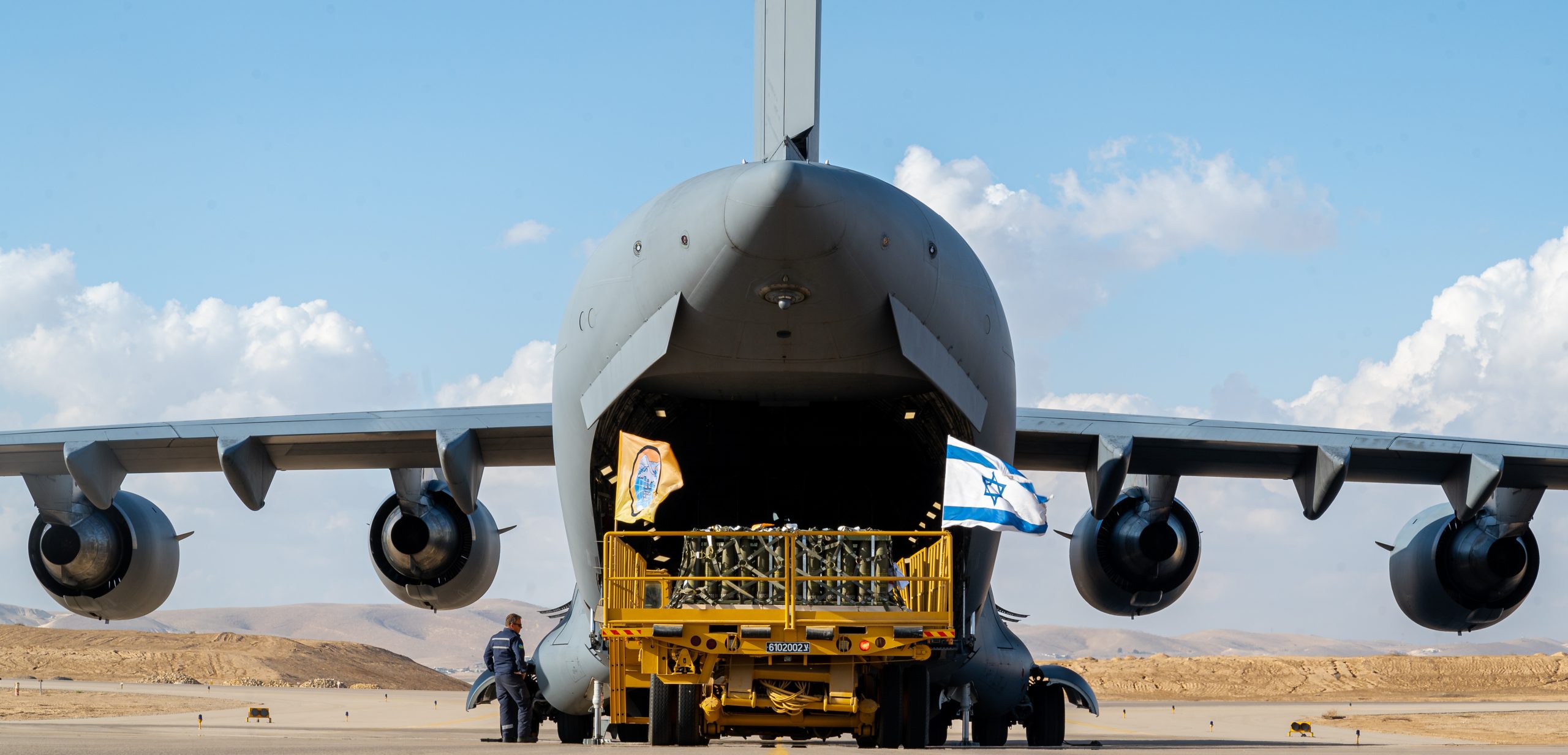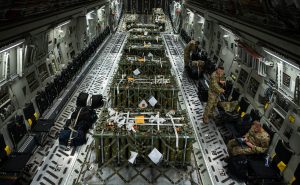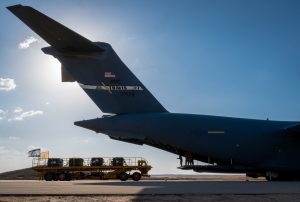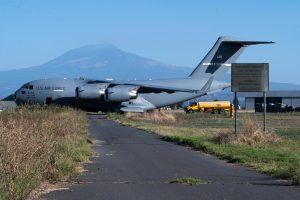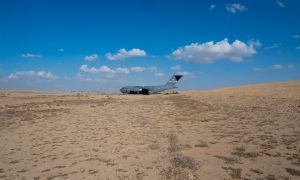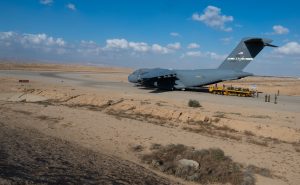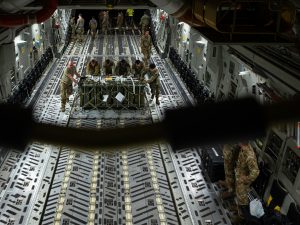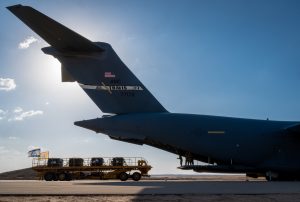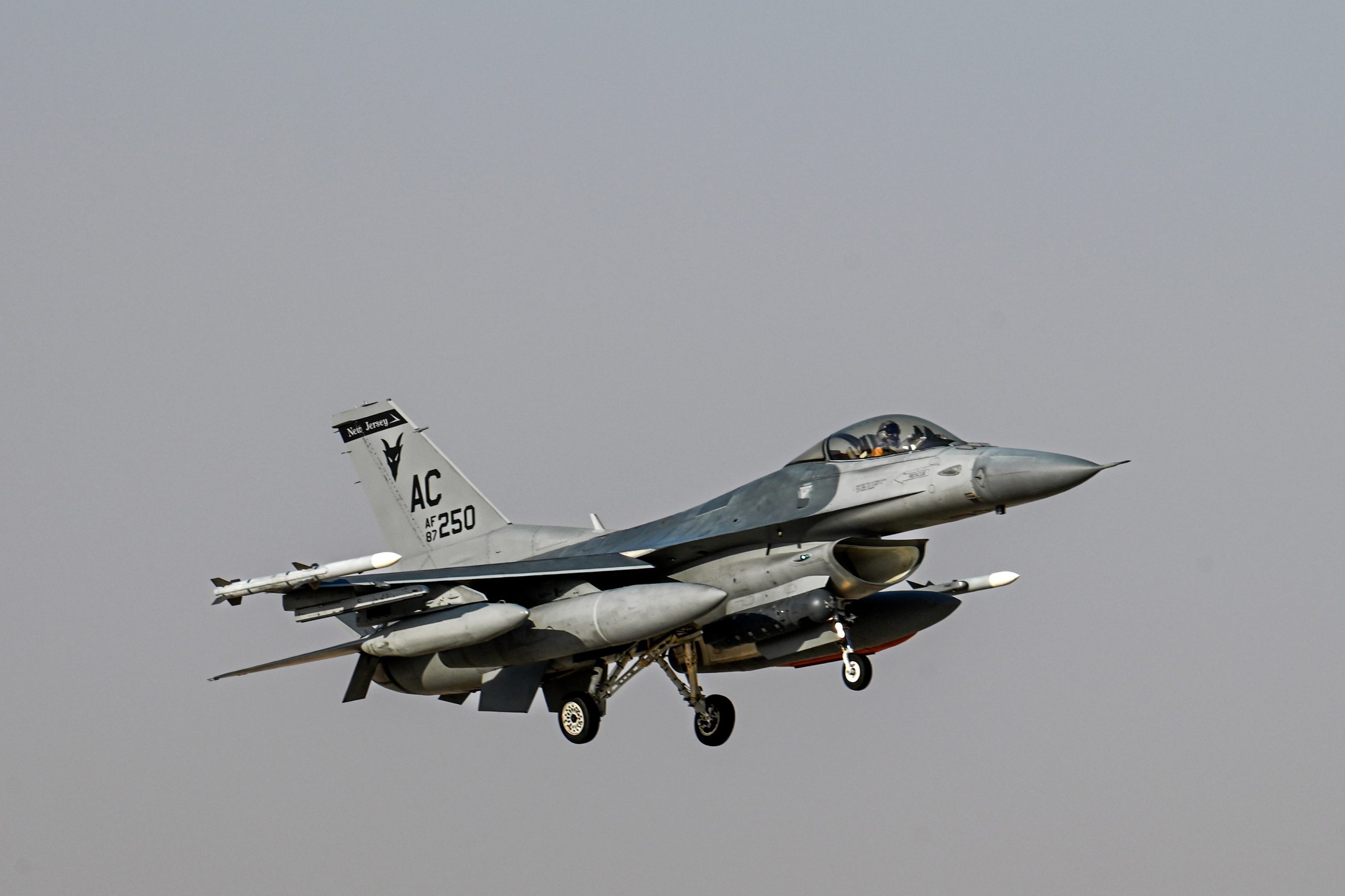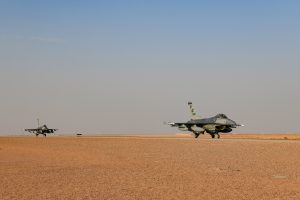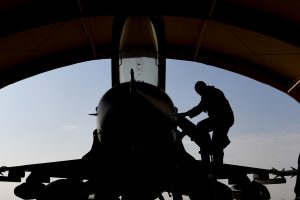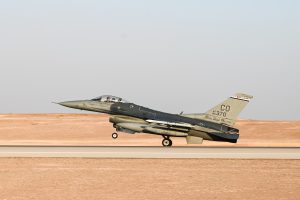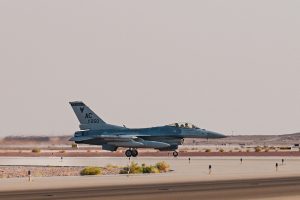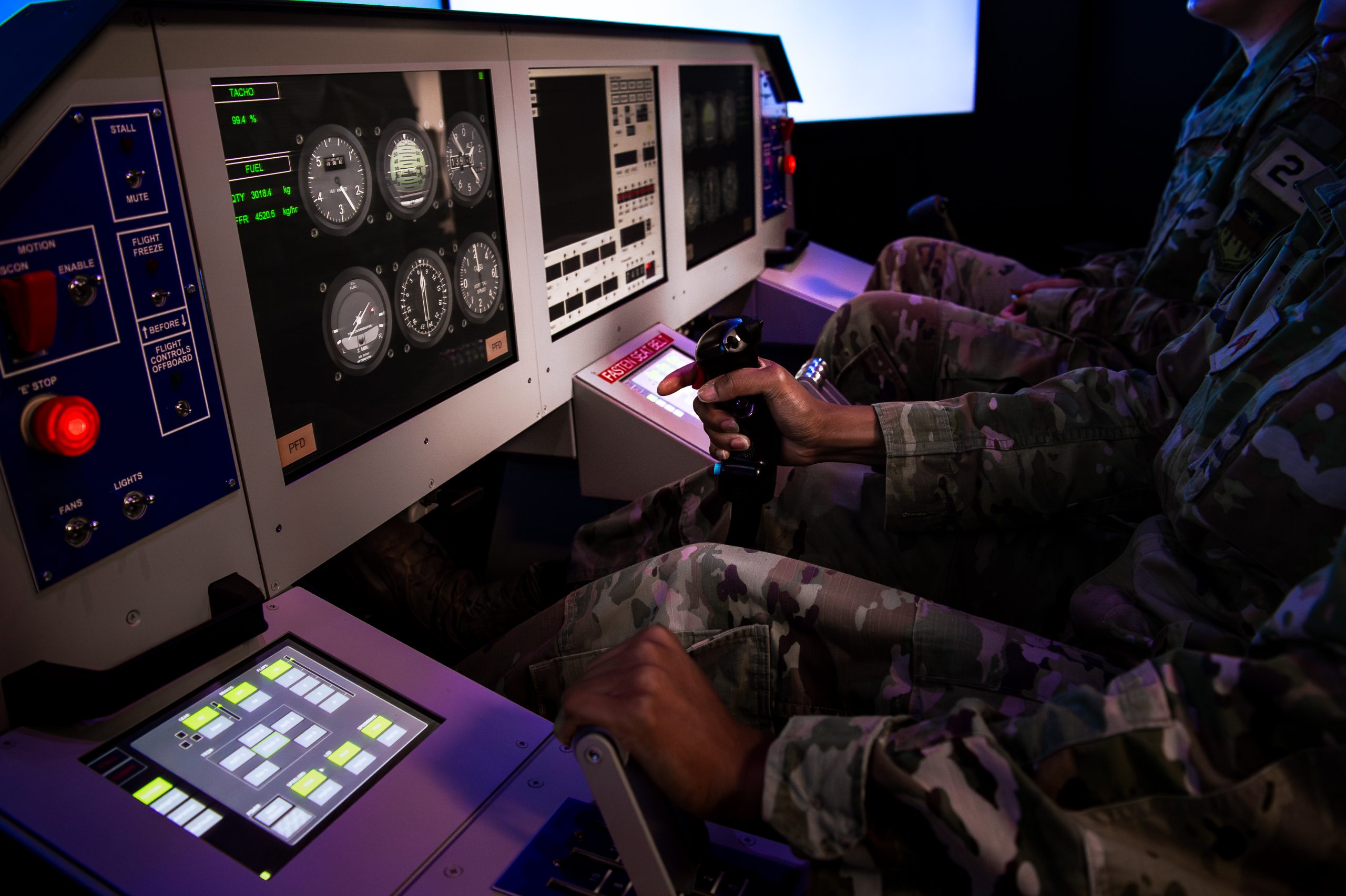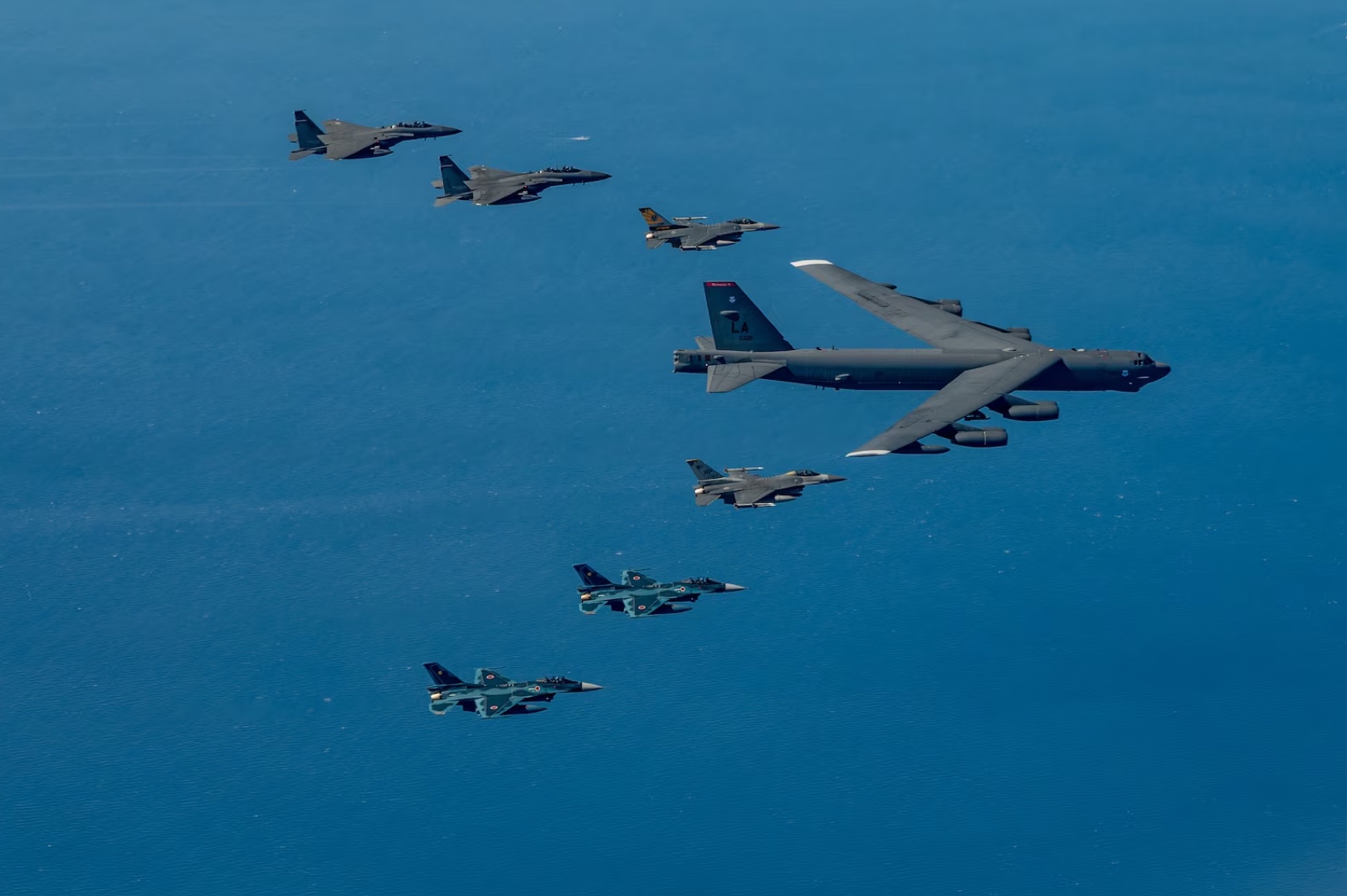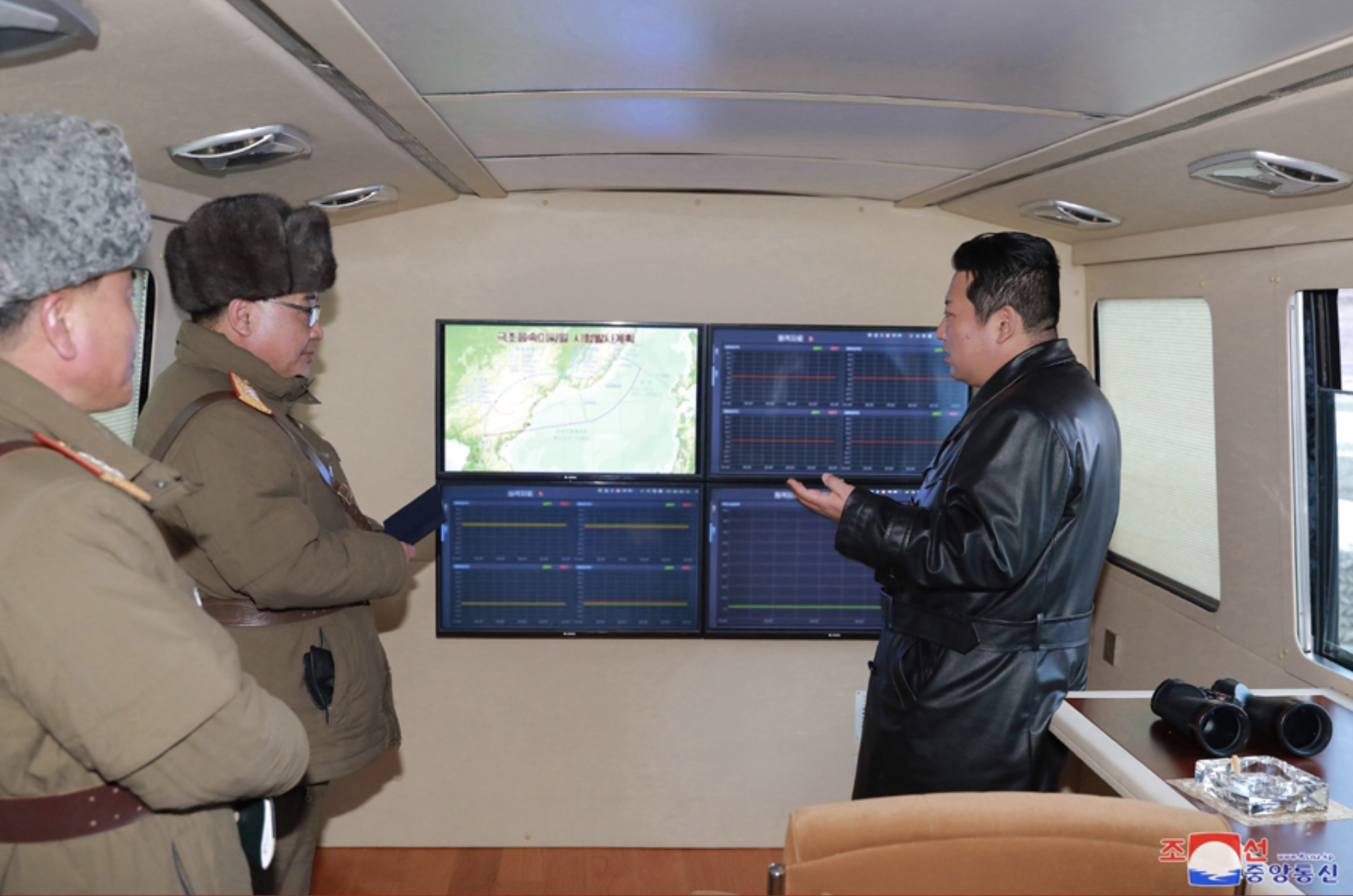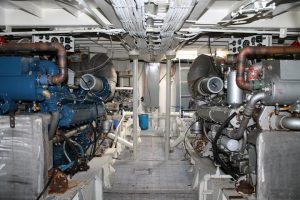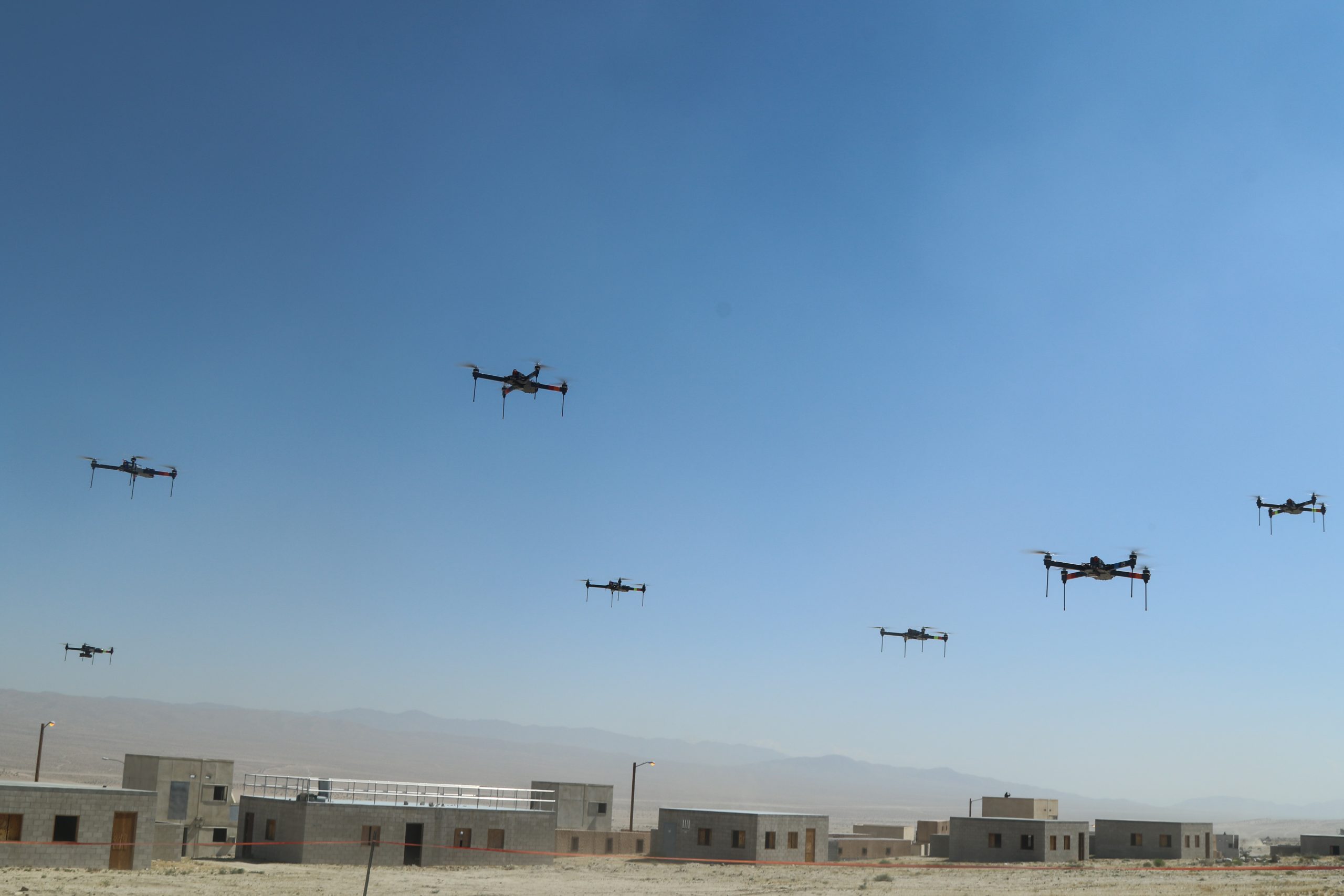While the Pentagon surges U.S. forces to the Middle East to deter further conflict in the region, the Air Force’s airlift fleet has been steadily working to deliver essential munitions, armored vehicles, and aid to Israel for its war against Hamas using C-17 Globemaster III aircraft.
Images published Oct. 24 show that aid in action, with Airmen from Ramstein Air Base, Germany, loading cargo onto a C-17 from Travis Air Force Base, Calif., and delivering it to Nevatim Base in Israel.
According to the Pentagon, five C-17s transported a variety of security assistance to Israel between Oct. 12 and Oct. 16. U.S. Transportation Command declined to release additional information on the volume and the specifics of the munitions C-17s are carrying to Israel.
During a briefing last week, Deputy Pentagon Press Secretary Sabrina Singh said she anticipates “nearly daily deliveries” of aid to Israel.
The U.S. has already supplied Israel with munitions such as small diameter bombs and Joint Direct Attack Munition (JDAM) tail kits, through Direct Commercial Sales Contracts, a senior defense official said Oct 23.
The JDAM is a guidance kit that transforms existing unguided free-fall bombs into precise, all-weather ‘smart’ weapons.
The senior official added that before the Oct. 7 Hamas terrorist attack, some 155mm ammunition had been taken from Israel’s war reserve stockpile to replenish U.S. stocks in Europe. However, a significant portion of that ammunition has been redirected and provided to the Israel Defense Forces for their use.
The Pentagon is expediting existing weapons orders for Israel from defense companies as well.
The C-17 is a heavy-lift, strategic transport capable of direct tactical delivery of all classes of military cargo. The aircraft previously conducted missions to bring back individuals from Israel following the Hamas attack.
After deploying F-15Es and A-10 Thunderbolts to the Middle East, the Air Force is bolstering its presence in the Middle East by sending additional F-16 Fighting Falcons that landed Oct. 24.
Meanwhile, President Joe Biden briefed Israel’s Prime Minister Benjamin Netanyahu on U.S. support and regional deterrence, including new military deployments on Oct. 23.
Biden also welcomed the release of two more hostages from Gaza and reaffirmed his commitment to securing the release of all remaining hostages including Americans, and maintaining humanitarian assistance in the region.
